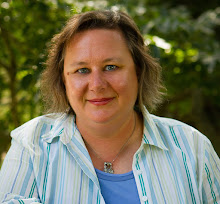Bridalwreath spirea - tiny bouquets!
Cascading white fountains are popping up all over town. It's bridalwreath spirea (Spiraea x vanhouttei) time. I live in an old suburb with a big mix of houses from Victorians to McMansions. Many of the older homes have at least one of these Victorian grand dames of blooming shrubs, including mine. This is the only spirea that I absolutely adore. Part of it is sentiment - I used to pluck the flowers to use as bouquets for my Barbie's weddings. They were the perfect size and shape. Mostly, I am fond of this shrub for its exuberance. I think bridalwreath spirea looks best when left to its own fountainy devices in all it's flowing glory. This is not a small shrub. It is virtually impossible to kill. It even tolerates shade, though it prefers full sun. I cut mine almost to the ground about every five years or it would eat the porch.
This spirea is also an important indicator plant. What does it indicate? Well, when it blooms, it means that it is warm enough to treat certain pests and diseases. For example, when bridalwreath spirea begins to bloom, it's the time to treat euonymus scale because the tiny litte caterpillars (or crawlers) are out and about. You can kill the crawlers with insecticide, but not the adults. Indicator plants give us a good guideline as when pests and diseases are vulnerable so we don't spend time, money and chemicals wastefully.
So, not only is it pretty, but I can use it to predict when to treat a number of things. In the Chicago area, my pest and disease teacher, Don Orton is a local legend. He compiled Coincide: The Orton System of Pest and Disease Management which is an invaluable book about when and how to treat a huge range of common problems. In class, inevitabley, the answer to a question about indicator plants was a chorus of Spiraea x vanhouttei! If you've got enough space and enough sun, consider adding this old fashioned, tough as nails, beauty.
My beauty






